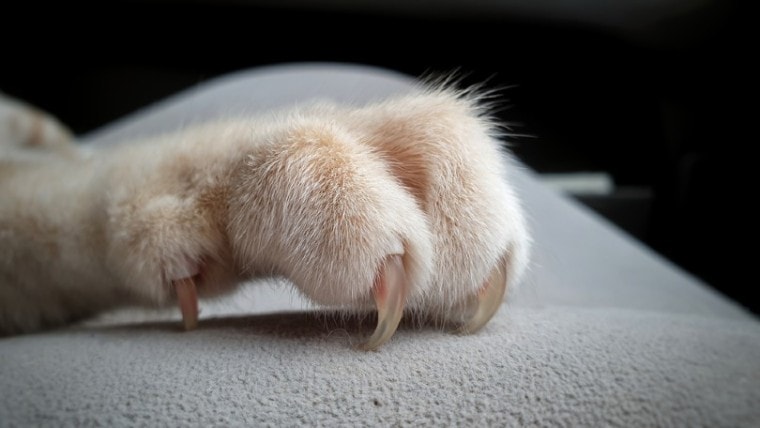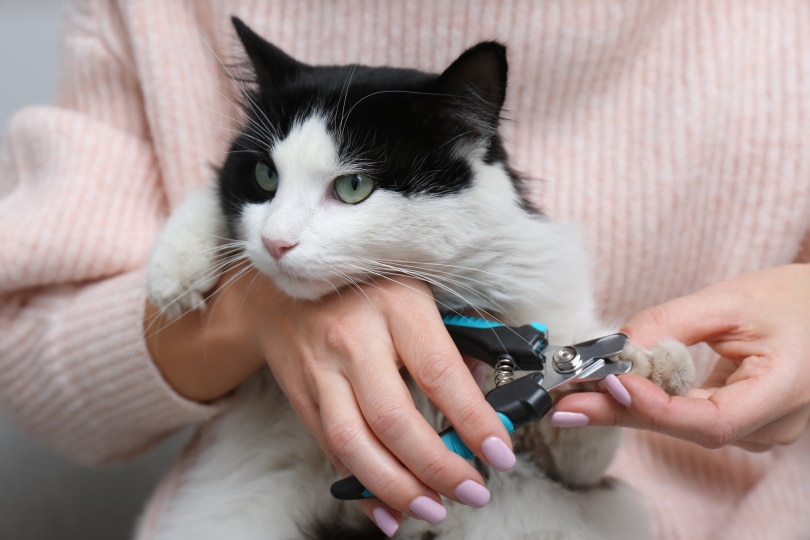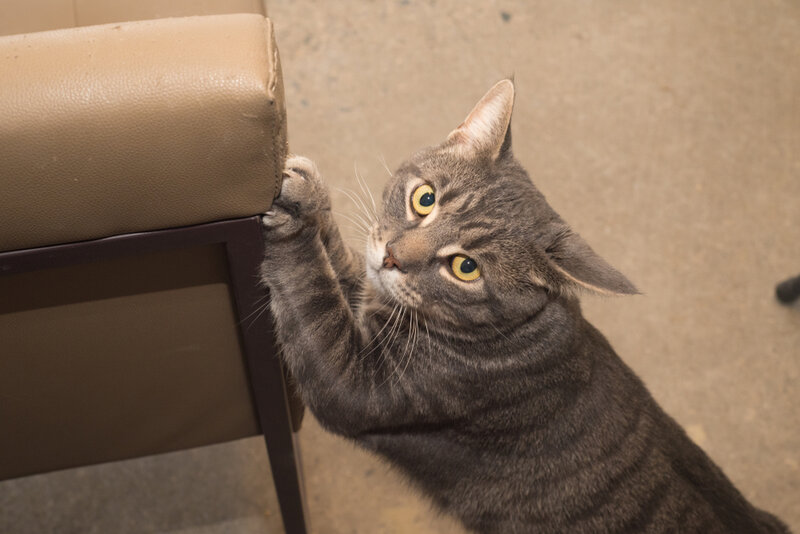
Have you ever stumbled upon your cat’s detached claws stuck in items around the house, like scratchers and furniture? For many people, this is concerning and can lead to a desperate search for the cat to give a thorough exam, only to discover that it looks like all claws are intact. What’s up with that? Why do cats shed their claws? Does it mean there’s something wrong with your cat? Well, turns out they are shedding their sheath and this happens to keep their claws nice and sharp! Here’s what you need to know about cats shedding their claws.
 Why Do Cats Shed Their Claws?
Why Do Cats Shed Their Claws?
Cats don’t actually shed their claws at all. What you’re seeing stuck in your cat’s scratcher is the sheath of the claw, which is essentially the hollow external portion of the claw. By shedding the claw sheath, your cat is working to keep its claws in tip-top, sharp shape.
While this may sound like an oxymoron, shedding the claw sheath keeps your cat’s claws as sharp as possible. What happens when cats shed the claw sheath is that the dullest portion of the nail slips off of the nail layers below it, leaving behind nothing but a sharp claw that hasn’t been dulled by use yet. By losing the external nail sheath, your cat’s claws continue to be extremely sharp and functional, allowing your cat to continue using the claws for important tasks like climbing, hunting, and protection.

Can Cats Break Their Claws?
If you come across your cat’s claw and there is blood or you can see that there is no longer a nail attached to the paw, then you should be concerned. Cats can break their nails, just like people and dogs can. The nail can either break off, leaving part of the nail in the nailbed, or come fully detached from the nailbed. Either way, the nail will eventually grow back, but there are some concerns in the meantime.
No matter what type of nail break your cat has, there is a risk of infection, pain, and bleeding. There is a blood vessel inside your cat’s claws called the quick. The quick can be torn or broken open when a nail breaks, leading to a large amount of bleeding and pain. In some instances, the nail can be pulled out of the nailbed but leave the quick behind. There may not be any blood, but there is a risk of infection and the quick is very sensitive, so this can be extremely painful to your cat. You may also spot an incomplete nail break, where the nail is still partially attached to your cat’s foot but is cracked and dangling.
What Can I Do If My Cat Breaks Its Claw?
If you notice that your cat has experienced a broken claw, a vet visit is in order. It typically isn’t an emergency unless you can’t get the bleeding under control, or your cat is in a large amount of pain that doesn’t seem to be subsiding. Styptic powder is available at pet stores and can help stop the quick bleeding if your cat’s nail becomes damaged. Oftentimes, styptic powder can help decrease the amount of discomfort your cat is experiencing as well.
It is a good idea to get your cat to the vet as soon as you can. If it’s a holiday or weekend, then it’s likely an issue that can wait until the regular vet reopens but you should monitor your cat’s behavior carefully. If you notice behaviors that are unusual for your cat, like hiding, aggression, limping, hyper-grooming, or not eating or drinking, then your cat may need to see the emergency vet to make sure there is not another injury that has occurred when the nail became damaged. In severe cases, an injury to a claw can result in joint, tendon, or bone injuries.
Keeping your cat's nails trimmed can help you avoid many common paw problems. We like Hepper's Cat Nail Clipper Set because it has it all: two sizes of well-designed clippers, a nail file, and a handy carrying pouch. The clippers have built-in safety guards and locking switches, and the blades are made of sturdy, easy-to-clean stainless steel.
At Pet Keen, we've admired Hepper for many years, and decided to take a controlling ownership interest so that we could benefit from the outstanding designs of this cool cat company!

How Should I Care for My Cat’s Claws?
Some cats may require nail trims, which are surprisingly easy to do if your cat is cooperative. If you’re unsure how to trim your cat’s nails or how frequently it needs to be done, your cat’s vet should be able to give you guidance and show you how to perform the procedure. For cats with damaged or overgrown nails, the vet may need to do the trim to make sure injuries don’t occur during the trim and to ensure there are no injuries and no damage related to the overgrown nails.
For cats that wear claw caps, routine nail maintenance is necessary to keeping the nails healthy. Usually, claw caps instruct you to trim the nails before applying the caps. With claw caps, it’s extremely important to ensure they are applied correctly, or they can lead to damage of the nails, nailbeds, and feet. Your vet or groomer can help you with this task and ensure they are put on correctly.
 In Conclusion
In Conclusion
If you notice that your cat sheds its claws, don’t let it concern you. Shedding the claw sheath is a perfectly normal part of your cat’s natural nail maintenance. However, if you notice this happening excessively or you see entire claws or damage to the claws or feet, then your cat should be checked over by the vet to ensure there isn’t another issue going on. As your cat ages, its nail maintenance needs will likely change, so get in the habit now of regularly checking your cat’s feet and claws for injuries, breaks, and stuck sheaths.
See also:
- Why Chocolate Is Toxic to Dogs: Our Vet Explains
- How to Trim a Cat’s Nails That Won’t Let You: 7 Vet Approved Steps
Featured Image Credit: RJ22, Shutterstock


 Why Do Cats Shed Their Claws?
Why Do Cats Shed Their Claws?




